CG Trader

Motorcycle Suspension
by CG Trader
Last crawled date: 1 year, 11 months ago
A motorcycle's suspension serves a dual purpose: contributing to the vehicle's handling and braking, and providing safety and comfort by keeping the vehicle's passengers comfortably isolated from road noise, bumps and vibrations. The typical motorcycle has a pair of fork tubes for the front suspension, and a swingarm with one or two shock absorbers for the rear suspension
The most common form of front suspension for a modern motorcycle is the telescopic fork. Other fork designs are girder forks, suspended on sprung parallel links (not common since the 1940s) and bottom leading link designs, not common since the 1960s.
Some manufacturers (e.g. Greeves) used a version of the swinging arm for front suspension on their motocross designs. A single-sided version of the idea is also used in motor scooters such as the Vespa. The hub-center steering as developed by Ascanio Rodorigo, on a concept associated to Massimo Tamburini is a complex front swingarm alternative system that entails suspension and steering, as seen in projects such as Bimota Tesi and Vyrus motorcycles.win shock refers to motorcycles that have two shock absorbers. Generally, this term is used to denote a particular era of motorcycles, and is most frequently used when describing off-road motorcycles. During the late 1970s and 1980s, motorcycle rear suspension design and performance underwent tremendous advances. The primary goal and result of these advances were increased rear wheel travel, as measured in how far the rear wheel could move up and down. Before this period of intense focus on rear suspension performance, most off-road motorcycles had rear wheel travel of about 3.5–4 inch (9–10 cm). At the end of this period, most of these motorcycles had rear wheel travel of approximately 12 inch (30 cm). At the beginning of this period, various rear suspension designs were used to reach this degree of performance. However, by the end of this period, a design consisting of using only one shock absorber (instead of two) was universally accepted and used. The performance of single shock absorber suspensions was vastly superior to twin shock motorcycles. Accordingly, this design distinction is readily used to categorize motorcycles. With the exception of Bentley and Draper system (New Imperial and Brough Superior machines) and the HRD (later Vincent) system both developed and patented in the 1920s it is only since the 1980s that monoshock motorcycles have been the norm, the term twinshock is now used to categorize vintage motorcycles. This distinction is important in that it provides classes used for vintage motorcycle competition. For example, vintage motocross races are held for older motocross motorcycles. To prevent the better-performing monoshock motorcycles from dominating the competition, there are separate competition classes for monoshock and twinshock motorcycles, which prevents them from competing directly against each other. motorcycle tool bike motor biker motorbike cycle moto chopper scooter harley harley davidson race bicycle sportbike cyclist cycling motorcycle helmet racing rider industrial
The most common form of front suspension for a modern motorcycle is the telescopic fork. Other fork designs are girder forks, suspended on sprung parallel links (not common since the 1940s) and bottom leading link designs, not common since the 1960s.
Some manufacturers (e.g. Greeves) used a version of the swinging arm for front suspension on their motocross designs. A single-sided version of the idea is also used in motor scooters such as the Vespa. The hub-center steering as developed by Ascanio Rodorigo, on a concept associated to Massimo Tamburini is a complex front swingarm alternative system that entails suspension and steering, as seen in projects such as Bimota Tesi and Vyrus motorcycles.win shock refers to motorcycles that have two shock absorbers. Generally, this term is used to denote a particular era of motorcycles, and is most frequently used when describing off-road motorcycles. During the late 1970s and 1980s, motorcycle rear suspension design and performance underwent tremendous advances. The primary goal and result of these advances were increased rear wheel travel, as measured in how far the rear wheel could move up and down. Before this period of intense focus on rear suspension performance, most off-road motorcycles had rear wheel travel of about 3.5–4 inch (9–10 cm). At the end of this period, most of these motorcycles had rear wheel travel of approximately 12 inch (30 cm). At the beginning of this period, various rear suspension designs were used to reach this degree of performance. However, by the end of this period, a design consisting of using only one shock absorber (instead of two) was universally accepted and used. The performance of single shock absorber suspensions was vastly superior to twin shock motorcycles. Accordingly, this design distinction is readily used to categorize motorcycles. With the exception of Bentley and Draper system (New Imperial and Brough Superior machines) and the HRD (later Vincent) system both developed and patented in the 1920s it is only since the 1980s that monoshock motorcycles have been the norm, the term twinshock is now used to categorize vintage motorcycles. This distinction is important in that it provides classes used for vintage motorcycle competition. For example, vintage motocross races are held for older motocross motorcycles. To prevent the better-performing monoshock motorcycles from dominating the competition, there are separate competition classes for monoshock and twinshock motorcycles, which prevents them from competing directly against each other. motorcycle tool bike motor biker motorbike cycle moto chopper scooter harley harley davidson race bicycle sportbike cyclist cycling motorcycle helmet racing rider industrial
Similar models
cg_trader
$7

MotorCycle Shock Absorber
...ar suspensions, and widely used on front and rear suspensions in motorcycle and cars. shock motorcycle absorber rear tyre vehicle
grabcad
free

Swingarm
...and atvs. it is used to hold the rear axle firmly, while pivoting vertically, to allow the suspension to absorb bumps in the road
grabcad
free

Swingarm
...swingarm
grabcad
a swingarm is originally known as swing fork, is the main component of the rear suspension of motorcycles.
grabcad
free

Swing Arm
...nd atvs. it is used to hold the rear axle firmly, while pivoting vertically, to allow the suspension to absorb bumps in the road.
grabcad
free

Bike Swing Arm
...nd atvs. it is used to hold the rear axle firmly, while pivoting vertically, to allow the suspension to absorb bumps in the road.
grabcad
free

swing arm
...otorcycle to its body, allowing it to pivot vertically. ... the swingarm has also been used for the front suspension of scooters.
grabcad
free

Motorcycle Chassis With Rear Wheel
...motorcycle chassis with rear wheel
grabcad
motorcycle chassis with rear wheel and suspension forks
grabcad
free

Shock Absorber for twinshock
...shock absorber for twinshock
grabcad
investigation of shock absorber design for a pre 65 trials bike
grabcad
free

Rear Shock Absorber
...rear shock absorber
grabcad
rear shock absorber for motorcycle
grabcad
free

Shock absorber ( Suspension )
...most important part of suspension system .
shock absorber which absorb the damps and shocks from rough surfces and bumpy roads .
Motorcycle
3d_export
$6

Motorcycle
...motorcycle
3dexport
motorcycle
3d_export
$5
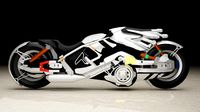
motorcycle
...motorcycle
3dexport
this is sci fi motorcycle!
archibase_planet
free
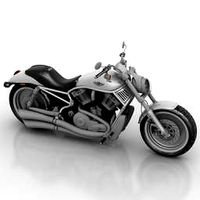
Motorcycle
...motorcycle
archibase planet
motorcycle bike
motorcycle n111008 - 3d model (*.gsm+*.3ds) for interior 3d visualization
archibase_planet
free

Motorcycle
...motorcycle
archibase planet
motorcycle motor transport
motorcycle n180608 - 3d model (*.gsm+*.3ds) for interior 3d visualization.
archibase_planet
free

Motorcycle
...le
archibase planet
motorcycle motorbike motor bicycle
motorcycle n290113 - 3d model (*.gsm+*.3ds) for exterior 3d visualization.
3d_ocean
$40

Motorcycle
...ike bobber highpoly motorcycle
3d model of custom motorcycle (old school bobber). it is not direct replica of any specific model.
archibase_planet
free
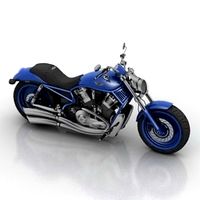
Motorcycle
...hibase planet
motorcycle motorbike motor bicycle
motorcycle v-rod n291213 - 3d model (*.gsm+*.3ds) for exterior 3d visualization.
archibase_planet
free
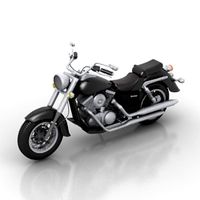
Motorcycle
...t
motorcycle motorbike kawasaki motor bicycle
motorcycle kawasaki n291213 - 3d model (*.gsm+*.3ds) for exterior 3d visualization.
archibase_planet
free
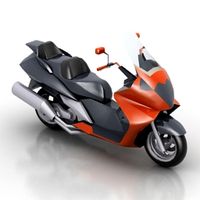
Motorcycle
...orcycle motorbike honda motor bicycle
motorcycle honda silverwing n271014 - 3d model (*.gsm+*.3ds) for exterior 3d visualization.
archibase_planet
free
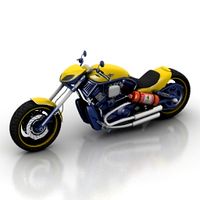
Motorcycle
...orcycle harley-davidson motorbike motor bicycle
motorcycle harley n291113 - 3d model (*.gsm+*.3ds) for exterior 3d visualization.
Suspension
3ddd
free

Circolo Suspension
...circolo suspension
3ddd
circolo , suspension
this is the circolo led suspension
3d_export
$20

suspension
...pension
3dexport
suspension it is used in bicycle, motorcycle; and many more object<br>rendering is done in photo view 360
3ddd
$1

Fieltebek suspension
...fieltebek suspension
3ddd
fieltebek , suspension
fieltebek
3d_export
free

suspension
...suspension
3dexport
3ddd
$1

Botti Suspension
...botti suspension
3ddd
botti
люстра botti suspension
turbosquid
$25

suspension
... available on turbo squid, the world's leading provider of digital 3d models for visualization, films, television, and games.
turbosquid
$8

suspension
... available on turbo squid, the world's leading provider of digital 3d models for visualization, films, television, and games.
turbosquid
$1
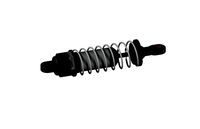
SUSPENSION
... available on turbo squid, the world's leading provider of digital 3d models for visualization, films, television, and games.
3ddd
$1

DELIGHTFULL MATHENY | SUSPENSION
... matheny , suspension
delightfull matheny | suspension
design_connected
$16

Vaeder Suspension
...vaeder suspension
designconnected
modular lighting instruments vaeder suspension computer generated 3d model.
